The Adelaide City Council, properly The Council and Corporation of the City of Adelaide, was the first municipal corporation in Australia. It was formed in 1840 by the passage of the City of Adelaide Municipal Corporation Act. The first mayor was James Hurtle Fisher, and the first council meeting was held on 4 November 1840. Unfortunately, the new corporation suffered financial woes, as several of its actions were unauthorised or reversed by the Home (British) government, leading to considerable council debt. The corporation collapsed as insolvent in 1843.
Rebuilding
For the next six years the city was managed by the Police Commissioner, and as conditions worsened there were vociferous complaints in the newspapers about the state of the town. In an 1848 letter to The South Australian, ‘A Citizen’ complained about ‘filth of every kind’ in the streets and asked ‘whose duty it is to suppress these nuisances? What is the Town Surveyor paid for? Is it that he may caper about on horseback and show off his Jack boots?’ The police were seen to be unable to act, as ‘A Citizen’ described the tortuous manner with which complaints were dealt. ‘If a nuisance is reported to a Constable he refers it to the Sergeant, he in turn to the Inspector, and when the case is brought before the Police Commissioner he will require the testimony of two parties before he will convict’.
In 1849 a new Board of City Commissioners were appointed, but this interim arrangement was short-lived, partly due to manpower shortages caused by the Victorian gold rushes. In 1852 the City Corporation was re-established under the Municipal Corporation Act of 1849. The city was divided into four wards led by aldermen and twelve councillors, one of whom was elected as mayor. During this period officials included the Town Clerk, the Inspector of Nuisances, Inspector of Weights and Measures, Inspector of Slaughterhouses, the Clerk of Markets and the City Surveyor. Increased and more regular revenues from markets, rates and other sources gave the council funds to improve the parlous state of roads within and into the city, including bridging the River Torrens. By the late 1850s a permanent bridge was open and, importantly for the future of the city and the colony, there was investment in the development of a railway system and a magnetic telegraph system.
Late nineteenth century
Adelaide City Council took the experimental step in 1861 of abolishing the position of alderman and allowing citizens to directly elect the mayor. It also changed the rules of enfranchisement to only include men and women who paid rates for properties in the city, rather than occupying them. While disenfranchising some residents, this opened a limited form of enfranchisement to the city’s female property owners, who would not be allowed to vote in any political elections for thirty more years. The council successfully lobbied its rate-payers for money to build a Town Hall, a ‘noble building’ which, according to the Border Watch was opened in 1866 to scenes of ‘wild joy’ from the populace. In 1873 the City was divided into six wards: these were named after the first six governors of the colony of South Australia. All these details were related in minute detail by former Town Clerk Thomas Worsnop, in his comprehensive History of the City of Adelaide, published in 1878.
As the population of the centre of Adelaide doubled to 40,000 in the twenty years to 1880, the council’s income grew, and public works projects such as horse-drawn tramways, the City Baths and a system of deep drainage sewage were introduced. Torrens Lake was created, providing a figurative and geographical oasis between North Adelaide and what used to be known as ‘South Adelaide’. It was a period of financial and social growth. In 1881 the reported revenue of the City Corporation was estimated at £51 000, with about £10 000 pounds available for expenditure on additional public works. The city’s largest and most famous market was established on the site between Gouger and Grote Streets, generating significant revenues for the corporation.
The day to day work of the corporation was done by three major departments run by three key public servants: the Town Clerk, the City Engineer and the City Treasurer. This administrative structure remained essentially intact for well over one hundred years. By 1880 the Town Clerk’s Department managed the routine inspection and licensing of vehicles and markets in the city, its public health, parks and gardens, the use of the River Torrens, and the City Market and City Slaughterhouse in the west park lands. The City Engineer’s Department controlled engineering, construction, and other outdoor works, including maintenance of roads, an unending task of huge proportions in the time before modern road-surfacing. The City Treasurer’s Department collected rates, assessed property values (often controversially, as landholders in 1884 increasingly decried ‘exorbitant’ rates) and kept the City’s financial accounts in order. These accounts were recorded in beautiful handwriting in the council’s huge leather-bound rate assessment books, ledgers and cash books.
Twentieth Century
When the corporation celebrated the seventieth anniversary of the founding of municipal government in Adelaide in 1910, Mayor Lewis Cohen suggested that in line with Sydney and Melbourne, the city should be adorned with the dignity of a Lord Mayoral appointment. The matter caused amusement, passion, scorn and anger in various parties. The Daily Herald wrote in 1911 of Cohen’s mission to gain the ‘tawdry title and tinsel coronet’ from the British Government, to whom the application had to be made. Cohen made a humiliatingly unsuccessful trip to Europe to secure the position before it was eventually granted in 1919.
A testing time for the corporation came during the Great Depression, when social and financial resources were stretched to the limit. The corporation, and many individual councillors, led efforts such as funding district nursing visits, developing civic relief work projects such as improvements to pathways, and organising Christmas parties for poor children. However, the presence of large numbers of unemployed men in the city caused tensions. Unemployed camps sprang up along the banks of the River Torrens, from the weir to the zoo and beyond. In 1931 thousands of men clashed with police in Victoria Square as they protested at the replacement of beef with lower-quality mutton on their already strict ration tickets.
In 1934 a new Local Government Act of South Australia consolidated the state’s various municipal corporations and district councils under one Act, and more clearly defined the Adelaide City Council’s enabling powers and obligations. An unusual spin-off of the new Act was the change in the end of the fiscal year to 30th June, necessitating a reduction of a halfpenny in the pound in rates for 1934.
During the 1930s the increasing strictures of the Depression led to some spirited arguing between the Premier and the council about the corporation’s role in illuminating the city for the 1936 South Australian Centenary. In the end, the corporation put on a ‘spectacular’ three-float display for the December 1936 ‘Pageant of Progress’, but declined any other role. Only four years later, in 1940, the wartime mood was even more sombre. An official luncheon at the Town Hall on 31 October was the only function held to commemorate the centenary of the Adelaide City Council. Other wartime measures in the city included digging of air-raid trenches in Victoria Square, air-raid training on the Adelaide Oval, and drilling of RSL Defence Force volunteers in the park lands. In October 1940 nearly 5000 veterans of the First World War, drawn from units around the state, took part in a rousing parade and inspection. The News wrote ‘the old diggers presented a fine appearance’, and still had the ‘dashing, upright bearing which characterised the men in khaki—in spite of outward indications of middle age’.
After the Second World War, the Adelaide City Council began a program of public works that had been delayed by the conflict. The most significant of these was to address the slum conditions in the city’s crowded backstreets and alleyways. These had been highlighted in a 1940s Select Committee Report on Sub-standard Housing. However, the rapid influx of new migrants to the city and state, and a shortage of suitable building supplies, put housing of any standard at a premium, and conditions took a long time to improve. Eventually, many of the worst areas were cleared and rezoned as commercial areas, reducing the number of residencies and increasing business development.
Development of the modern city continued at a pace, with increasing numbers of ‘high-rises’ being built, and several daring road-widening programs being undertaken in the 1950s to accommodate the rapidly growing motor traffic issue. Parking became a constant problem, and although measures were introduced to provide more spaces, the council’s plans could not keep up with the massive surge in car use. In 1966 the head of a large city department store complained that there were no multi-storey car-parks within the city square-mile, despite a 4% annual increase in demand.
One area of growth of a different sort was the City Council’s involvement in the highly successful Adelaide Festival of the Arts, a biennial event from 1960 onwards. Tens of thousands of South Australian, interstate and international visitors attended during the 1960s, and there was soon wide support for a Festival Centre to provide a tangible heart to the event. In 1969 Adelaide City Council promised to provide about a third of the estimated five million dollar cost, with the State Government and private contributors making up the rest. The Festival Theatre opened with what the Canberra Times called a ‘gala occasion’ in 1973, and the finished Centre was launched just over a year later, with over 250 bottles of vintage champagne consumed at the star-studded party.
In the mid-1970s the Adelaide City Council made a decisive move towards more considered and regulated planning for the city, adopting the City of Adelaide Master Plan in 1975. Lord Mayor William Hayes said that preparation and implementation of the new plan, a blueprint for the future, ‘would be the most important thing to happen to the city since Colonel Light laid it out in 1837’. An innovation adopted in 1976 was the creation of a pedestrian-only thoroughfare on a section of Rundle Street to form the new Rundle Mall. This measure had been proposed on and off for several decades, with some strong reactions both for and against it. The Hindmarsh Building Society commissioned artist Bert Flugelman to produce a large artwork, which it donated to the City Council for the new mall area, and in 1977 Flugelman delivered ‘Spheres’, which soon became an iconic meeting place for people in Adelaide.
Recent Years
Since the middle of the 1970s the Corporation of the City of Adelaide has undergone several reviews to bring structural changes and create new departments and divisions. The current business model divides the management of the city into six main portfolios whose task is to support the council and achieve key objectives set out in the City of Adelaide Strategic Plan 2012-16. While many things have changed about the city and the structures that run it, many of the responsibilities, duties and efforts of the council have remained the same over 170 years of service.


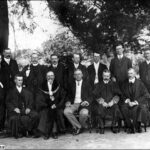

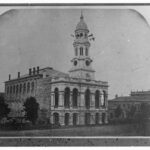
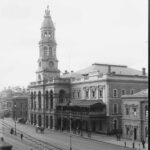
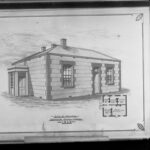
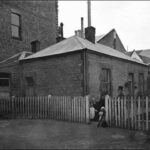

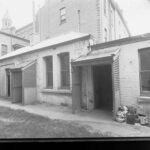
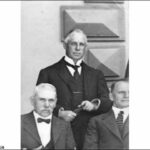


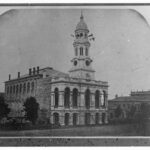
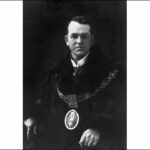
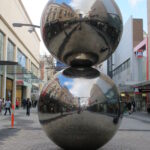
Comments
One response to “Adelaide City Council”
Have just started looking at your site. Curious to see if there is map where you can discover the history of a particular building site. EG the NE corner of Pulteney/Wakefield?